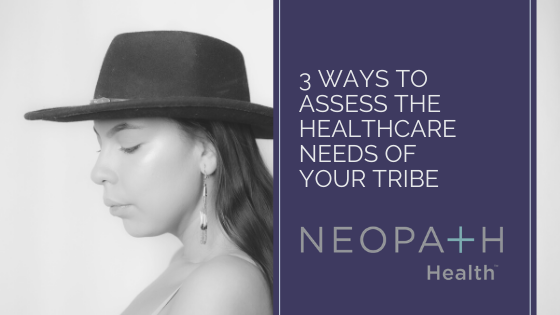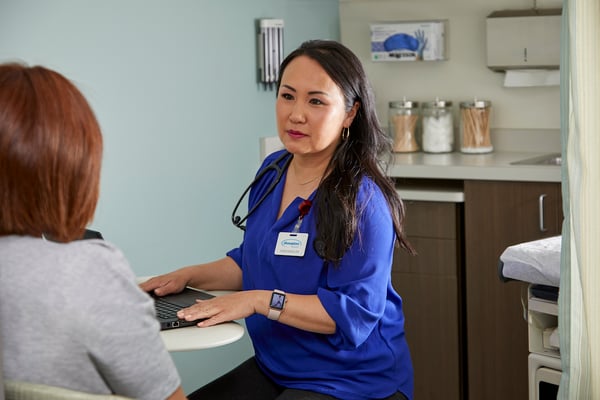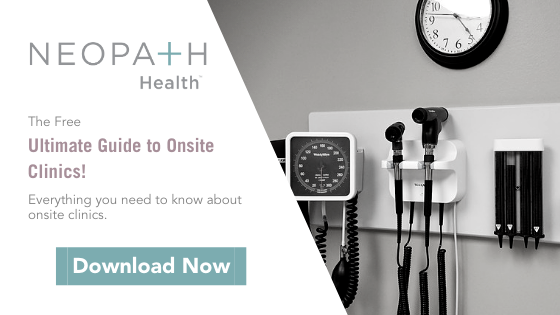Tribal communities face daunting health disparities. According to the Indian Health Service (IHS), life expectancy is 5.5 years lower for American Indian and Alaska Natives compared to the U.S. population. Tribal communities also face higher mortality rates for numerous diseases, including heart disease, diabetes, chronic liver disease and cirrhosis, and stroke.
If you’re a tribal leader looking for ways to improve the health of your community, we recommend you start by assessing the healthcare needs of your tribe. To do this, you must first get a sense of the current health status of your tribe. Below are three ways to assess the healthcare needs of your tribe:

1. Conduct a biometric screening of your tribe.
Biometric screenings are a traditional way to assess the healthcare needs of any given population. Employers often conduct biometric screenings to pinpoint health concerns among their employee population and to inform the type of wellness programs the organization should implement. Tribal communities can benefit from a similar process.
Learn how easy biometrics screens are with onsite clinics. Get your free guide here.
During a biometric screening, nurses draw basic labs to run a metabolic, lipid, and hemoglobin panel. Biometric screenings give you a view of how many community members have chronic health conditions, like diabetes, high blood pressure, and high cholesterol. These numbers give your tribal leadership a benchmark from which to improve and provide ideas for what health and wellness programs the tribe should invest in to improve the community’s health.
For example, if you discover diabetes is one of your tribe’s top health concerns, you might look into hiring a nutritionist with experience helping people manage diabetes. This nutritionist could hold educational programs that help tribal community members make healthier food choices.
2. Survey the tribe on their health, wellness, and social habits.
Surveying your tribe can also help you assess the healthcare needs of your tribe beyond what lab work can tell you. Surveys can be anonymous and ask community members about their health behaviors and habits. Surveys can include questions like:
- When is the last time you visited the doctor?
- How many times a week do you exercise?
- How many servings of fruits and vegetables do you get per day?
- How many alcoholic beverages do you drink per week?
Since surveys are more private than a one-on-one conversation with a nurse or healthcare provider, they might uncover insights about your tribe that would be difficult to find otherwise. For example, you might learn that the majority of your tribe hasn’t visited the doctor in over a year, signaling that it might be time to consider how to improve access to healthcare services for your tribe.

Use surveys to gauge the health and social behaviors of your tribe, and to pinpoint areas for improvement.
3. Set up one-on-one conversations with trusted clinicians.
Relationships are essential in tribal communities. Another way to assess the healthcare needs of your tribe is to empower community members to confide in a clinician by providing access to trusted doctors or nurses. These clinicians should understand the unique needs of your tribal community and be sensitive to cultural differences.
Encouraging community members to set up appointments with these trusted clinicians will not only improve your tribe’s access to healthcare but may also help you understand the mental health needs of your community. When clinicians can meet with community members one-on-one, they can have thoughtful conversations about that person’s lifestyle and challenges. These one-on-one meetings can go a long way in uncovering healthcare needs related to mental health and substance abuse.
It may take time for the tribe to trust and respect the clinicians, but eventually, this access to trusted clinicians can help the tribe identify and address health issues that lab work usually can't find.
Tribal communities deserve equitable healthcare. So, if you find yourself asking, "How do I assess the health care needs of my tribe?" Try to:
1. Conduct a biometric screening of your tribe
2. Survey the tribe on their health, wellness and social habits
3. Setup one-on-one conversations with trusted clinicians
The path to better tribal health starts by assessing the healthcare needs of your tribe. Once you identify areas for improvement, you can begin evaluating whether wellness programs and an onsite tribal clinic makes sense for your community.
.png?width=433&name=NeoPath_2019_logo_2color%20(1).png)




